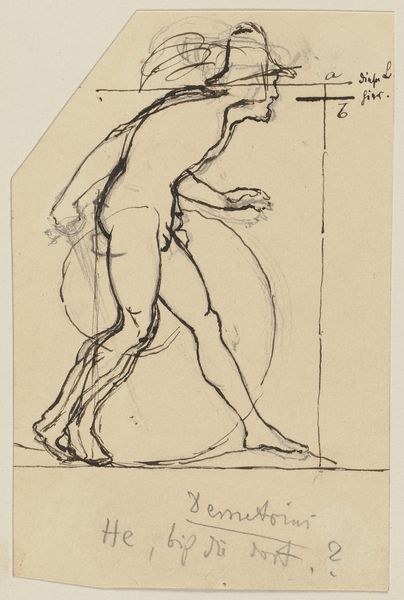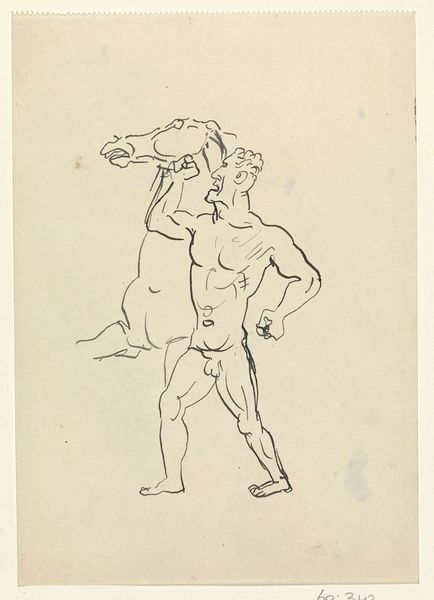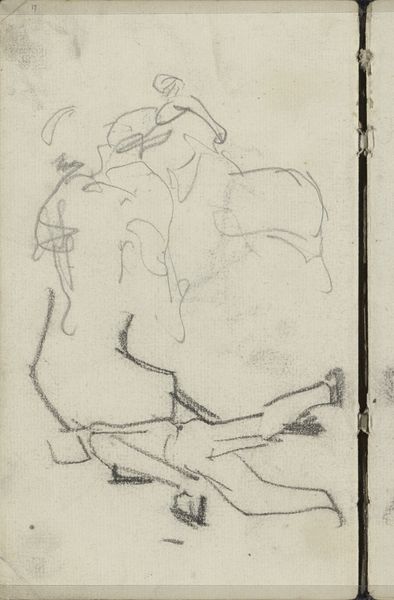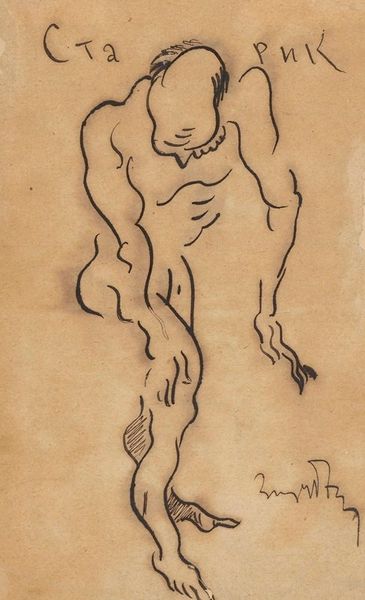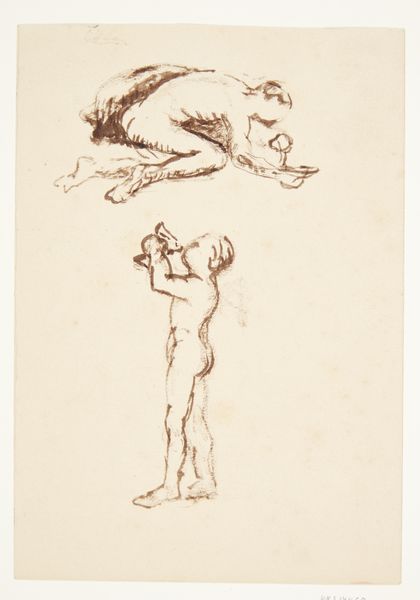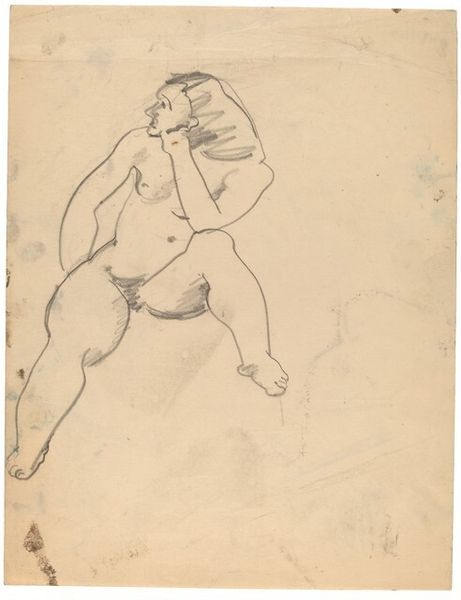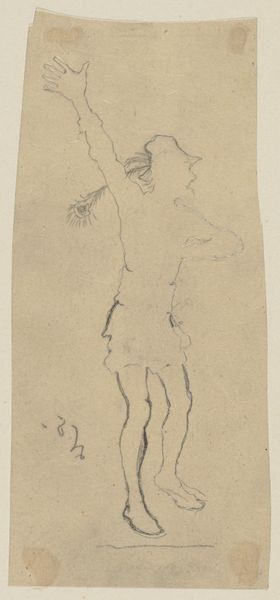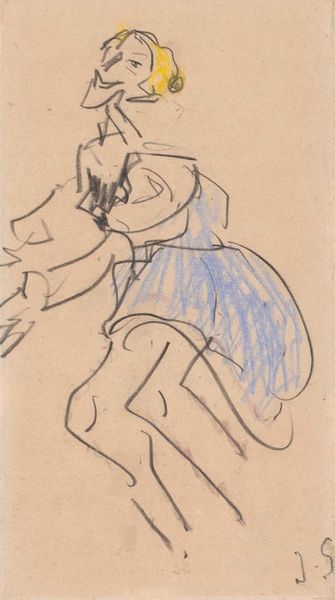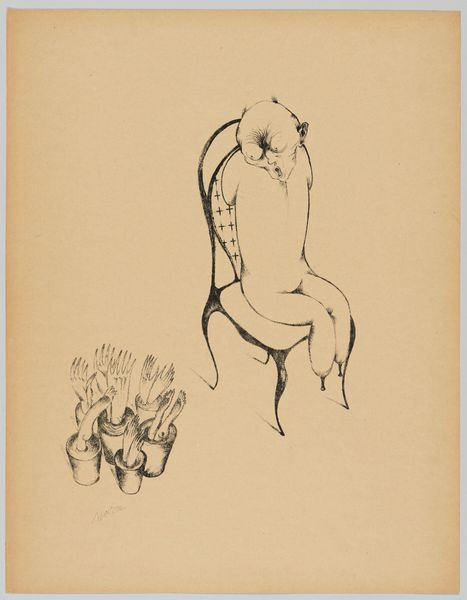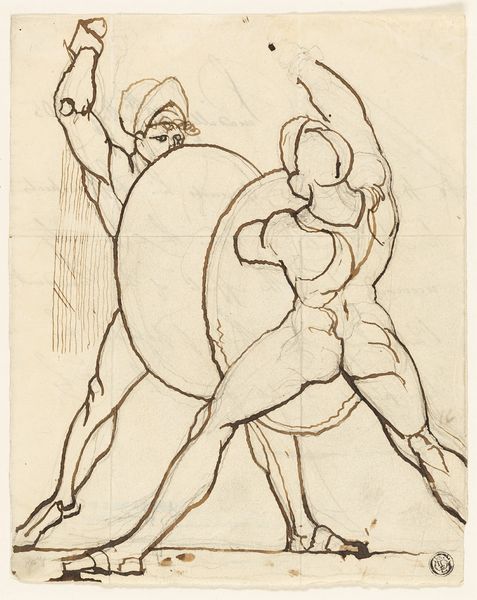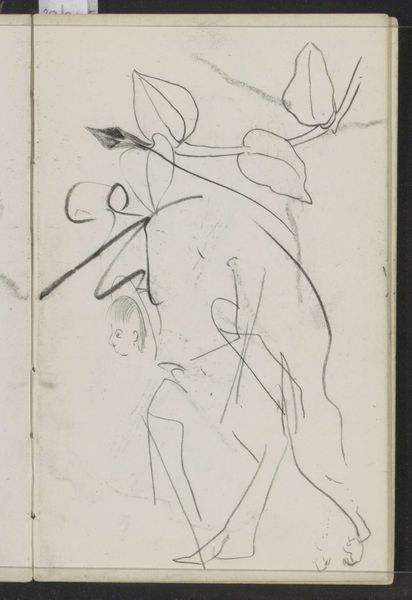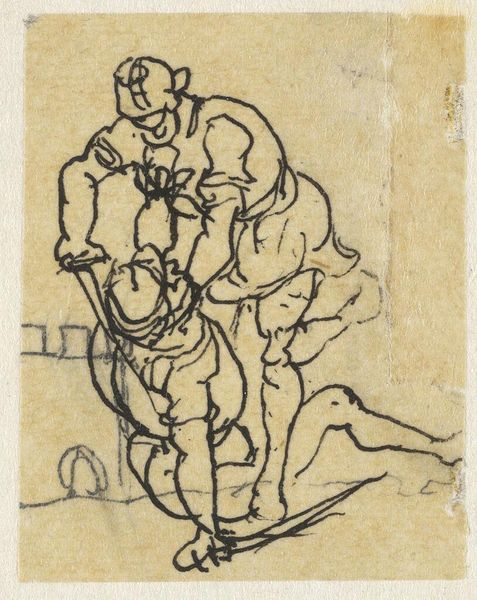
drawing, ink
#
drawing
#
ink drawing
#
figuration
#
ink
Dimensions: sheet: 16.51 × 10.64 cm (6 1/2 × 4 3/16 in.)
Copyright: National Gallery of Art: CC0 1.0
Curator: Standing before us is Max Weber's "Two Figures," a compelling ink drawing completed in 1943. It’s a particularly striking piece, given Weber’s explorations of modernism. Editor: My first thought is...intimacy. Despite the spare lines, or maybe because of them, it feels raw, almost vulnerable. The figures seem intertwined, but it's hard to tell if it's a struggle or an embrace. There's a kind of dance-like movement but also perhaps confinement. Curator: That tension you observe speaks to the complexities of the period. Weber, an immigrant from Belarus, deeply felt the weight of global events. In '43, as war raged, the notion of togetherness was fraught, especially for those navigating identity and belonging in America. There are many references to Webers Jewish identity and that is clearly embedded in his art practice. Editor: Right, that makes me think, look at how incomplete these figures are, a web of disconnected, dashed lines as if existence, their physical presence, is unstable. Curator: Exactly. We might consider how Weber engages with the figure – traditionally a celebration of the ideal body - he's fragmenting it, deconstructing it. Is this then a statement about the fractured nature of the human experience during wartime, and for those living in the shadow of the Holocaust? Or is it an engagement with the rise of abstraction and modernism in the 1940s? Editor: Or maybe… both. I think artists are always responding to a world in turmoil and the world of art as it finds a new language. He seems to suggest we are all—ideas, bodies, lives—works in progress, fragile, connected by the barest of threads of ink and that at any moment all the forms will just collapse in on one another and vanish like a blot on the page. But isn’t that what gives them, gives us, that unique presence and meaning? The constant sense of our impending, shared doom? Curator: A powerful observation. Weber, I believe, would appreciate your interpretation and articulation of that existential state. Editor: Well, it's an honor to engage with a piece that generates such feelings and to have these conversations. Curator: Indeed, these figures prompt questions about how we relate to one another in a time of unprecedented uncertainty, then and now. A timely contemplation sparked by simple ink on paper.
Comments
No comments
Be the first to comment and join the conversation on the ultimate creative platform.
